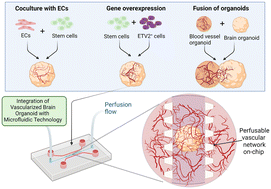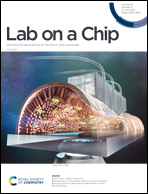Vascularized human brain organoid on-chip
Abstract
Modelling the human brain in vitro has been extremely challenging due to the brain's intricate cellular composition and specific structural architecture. The recent emergence of brain organoids that recapitulate many key features of human brain development has thus piqued the interest of many to further develop and apply this in vitro model for various physiological and pathological investigations. Despite ongoing efforts, the existing brain organoids demonstrate several limitations, such as the lack of a functional human vasculature with perfusion capability. Microfluidics is suited to enhance such brain organoid models by enabling vascular perfusion and a curated blood–brain barrier microenvironment. In this review, we first provide an introduction to in vivo human brain development and present the state-of-the-art in vitro human brain models. We further elaborate on different strategies to improve the vascularized human brain organoid microenvironment using microfluidic devices, while discussing the current obstacles and future directions in this field.



 Please wait while we load your content...
Please wait while we load your content...